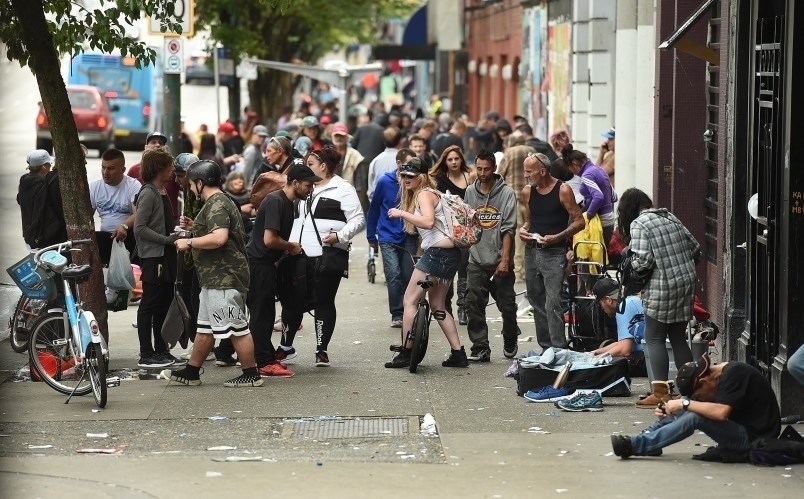A commentary by a local media relations consultant.
Bill Cleverley’s opinion piece, “Victoria’s homeless need more than harm-reduction help” (Times Colonist, April 19), finally calls out the “elephant in the room” when it comes to our approach to drug abuse and urban poverty in general. Simply put, if the intent of a harm-reduction strategy was to reduce the number of people living on the streets and reduce deaths from drug use, it has not worked. Twenty years of observation should tell us that.
There is another elephant in the room, though, that I think should be called out. I am not an expert in addictions, but I spent ten years ministering on Vancouver’s Downtown East Side.
Many of the people there became my friends, and it was heart-rending to watch how drug use gradually eroded their minds and bodies. Men and women of all ages, ethnicities and intelligence levels (I was surprised at the education level of many of the people I met) were robbed of all these good things by the drugs and a society that has decided that the best it can offer is to make them less harmful.
There are two “inconvenient truths” that we need to confront: one, is that drugs kill. No matter how clean the needle, how “safe” the space, how vigilant the staff, using illicit drugs like crack cocaine or heroin destroys the vital organs, ravages the brain and rots the teeth so a person can’t nourish themself properly.
It’s not about a cataclysmic overdose: this is a slow death. “Reduced” harm is still harm.
Two, is that any one of us is one misstep away from landing in the same situation. You never know what wrong decision, what action that “seemed like a good idea at the time,” could start a cascade of events leading to poverty, homelessness, and, yes, drugs. Maybe that’s the harshest, scariest truth of all, to say to oneself: “That could be me.”
Is “reducing” the harm the best we can do, as a society? Are we not judging addicts to be unworthy of total healing?
Are we not creating a separate class of people — the ones who are addicted, poor and homeless, as opposed to the “good folk” who have avoided that calamity? And who gets to make that call?
So the other “elephant” is the effect of our attitude. It’s easy to judge. It’s easy to “pass by on the other side,” either pretending not to notice them or shaking one’s head and muttering that “someone (but not me) should do something about that.” It’s easy to say, “well, when they want to beat the addiction, they will.” Anyone who believes that has no idea how the addiction, once it’s taken hold — and it doesn’t take much — dominates a person’s life, so that everything else, even eating, comes in a distant second.
As Bill writes, we need to take our treatment of people who are addicted beyond that first “pillar” and actually heal them. Does that mean forcing people into treatment? Not necessarily: whether it’s quitting smoking, losing weight or beating a drug habit, people have to want to rid themselves of it. If drugs are not the problem, but the solution for many people, and our society offers a promise of “reducing the harm,” why would someone bother getting off the drugs?
But as a society, look at what we lose. We’re talking about humans like you and me: do we measure their value in terms of worldly, dollars-and-cents “productivity,” or something different and less tangible? Consider John Donne’s words, “No man is an island, entire of itself; every man is a piece of the Continent, a part of the main … any man’s death diminishes me, because I am involved in Mankind … .”
Our attitude toward “street people,” “the homeless,” “addicts” — who are really our neighbours — can be the greatest harm. But that’s a harm we can reduce and even eliminate. As we do that, we’ll be amazed at what follows.



